Russian Military History:
The Origins of Russian Military Doctrine.
Considering the enormous changes that have taken place in the Soviet Union in the 67 years since the Bolshevik Revolution, it seems difficult to believe that certain fundamentals of its character as a nation have remained virtually unaltered. By comparison, the democratic countries of the West and Japan have profoundly reshaped their political and economic ideologies during this period. Since 1924, The Soviet Union have had only four leaders compare to the eleven presidents in the United States. The heads of the Soviet Communist Party have held their power for a minimum of ten years.
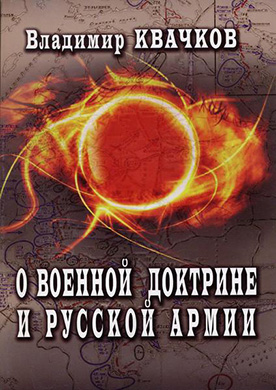
Russian Military History: The Russian Military Doctrine and Russian Army, book by Vladimir Kvachkov
In the realm of The Russian Military Doctrine, the Soviet Union has wavered only temporarily from its basic world outlook since the time of the earlier tsarist imperialism. The primary concern here will not be with the details of doctrinal development or with the lives of the various individuals who contributed so greatly to its evolution (for example, Suvorov, Kutuzov, Trotsky, Frunze, Tukhachevski, Stalin, Zhukov, Sokolovsky, and more recently, Gorshkov). Rather, it will be with those organic characteristics of Russia, the Soviet state, and the Communist system that have created an environment allowing these doctrinal elements to flourish.
Traditionally, the transformation of Russia into a major European and military power is said to have occurred during the reign of Peter I (“the Great,” 1682-1725). Certainly, however, there was a history of fighting spirit and doctrinal coherency dating back much earlier, to the time of the Tatar occupation and the rise of the Muscovite principality. These struggles in Russia’s infancy were, for the most part, absorptive in nature.
The shock of the Tatar invasion under Batu and Subudai in the mid-thirteenth century could not have been withstood by any force that Kievan Russia could muster. The nature of the Tatar occupation was such, however, that it gave the Russian people a chance to survive as a separate entity; they were not submerged and incorporated as a nation into the corpus of the Golden Horde.
There were two main reasons for this:
1. the Tatars did not try to move into the forests and towns in the north, choosing instead to remain in the south feeding their herds on the rich grasslands
2. the Tatars, nomadic by nature, did not develop the urban productive base, including metal working and weapons manufacture, that would allow them to keep pace with advancing technology. Economically, the Russians were able to maintain a system isolated from the Tatars, who were content merely to enforce the payment of tribute. In the long run, the relationship of economic and political forces was such that the Tatar rule would “wither away,” which it did, in fact, during the reign of Ivan III (1462-1505).
From the military standpoint, the Russian people learned several things from the Tatar occupation. The first lesson was that barriers had to be erected in the east and south to prevent a repetition of those events. Initially, this was done in the reign of Ivan IV (“the Terrible,” 1533-1584) by conquering centers of Tatar power in Kazan and Astrakhan and later by erecting fortress cities like Orel for “island defense” and hiring Cossack troops as mercenary guards. Ivan’s aggressive liquidation of the Tatar and Turkish menace continued under Peter I and Catherine II (“the Great,” 1762-1796). Another lesson the Russians took to heart was the importance of developing a military caste. This process was first begun during the reign of Ivan III with the creation of the pomestie system, whereby land grants could be obtained by the nobles from the Moscow government only on the condition that they help raise armies and pay for them. This system of land tenure forced the nobles to tie the peasants to the land as much as possible and keep them from leaving. According to one respected Russian historian, the spread of the pomestie system was one of the prime factors in the spread of serfdom throughout Russia. The danger from outside invasion and depredation was much worse than the danger of losing freedom to a crushing system of serfdom that, in many ways, was harsher than the treatment meted out to black slaves in the American South. It is interesting to speculate about what the history of the United States might have been had the American Indians possessed a larger reservoir of manpower and acted as a constant threat to our major population centers the way the Tatars did in Russia. What if Indians had overrun the colonies in the seventeenth century and held the European settlers in subjugation for over a hundred years? Few could doubt that our nation would have developed radically differently.
In Russia, the vestiges of serfdom were not eliminated until 1917, for the threat of the Tatars was quickly replaced by that of other powers with predatory interests, particularly in the rich and bountiful farming area that had supported the old Kievan state- the Ukraine. The military caste and the pomestie warier-estate system provided a practical means for repelling these threats, now from the west from Poland-Lithuania and from Sweden. The ascendancy of the Principality of Moscow, the neutralization of the Turko-Tatar threat, the ending of the expansionist aims of Poland-Lithuania, and the institutionalization of serfdom and the military caste were all logically connected and formed the basis for the next stage of military development-the creation of a large national standing army and navy under Peter the Great and the other Romanovs.
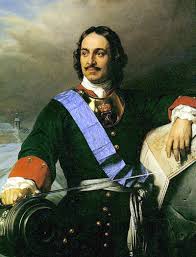
Russian Military History: Peter the Great
Much has been written about the Russian Military reforms of Peter the Great, so no attempt will be made here to recount his achievements in detail. Suffice it to say that after the defeat of the Swedish king, Charles XII, at Poltava and the Treaty of Nystad in 1721, Russia emerged as a major European power. Although Peter had gleaned his ideas about military reform from his extensive travels in the West and from numerous Western military advisors imported into Russia, such as the Dutch Franz Timmermann, the Scott Patrick Gordon, and the Swiss Francis Le fort, among others, the shape of the new army and its methods of warfare had some uniquely Russian characteristics.
In terms of strategy, Peter did not choose to meet Charles on unfavorable territory. Peter was content to allow the Swedish king to become mired first in a seemingly endless war in Poland. Then, when Charles did strike directly at Russia, the tsar did not try to blunt the offensive too soon but instead allowed the invading army to spend its energy overcoming the countless difficulties in maneuver across great distances and over inhospitable terrain. Peter had learned scorched earth tactics from the Tatars and used them against the Swedes, denying them the use of crops and fodder. Finally, when Charles’s offensive force was spent, a relatively easy victory was gained at Poltava at a small cost to Russia.
The commanders of Peter’s army were initially drawn from the old nobility (dvoriane), which had been expected to serve as the officer caste as well as to staff the ranks of the newly created civil administrations. Since there were no military colleges, the upper-class youth trained in one of the three guards regiments-the Semenovskii, the Preobrazhenskii, and the “Life Regiment” (later the Horse Guards). The growing need for Russian military and civilian officers, however, soon outstripped the supply of hereditary nobles. An attempt at a remedy for this was the ennoblement of bright young men who succeeded in making their way upward in the hierarchy. Finally, in 1722, a “Table of Ranks” was instituted that, among other things, granted the title of hereditary noble to every military man who achieved the lowest officer grade. This Table of Ranks remained in use substantially without change in Russia until 1917{4}. Despite the fact that a certain “democratization” was admitted in the opening of a path into noble status, the older aristocracy maintained a firm grip on the higher military posts. The traditional gap between nobles and non nobles in the military continued to exist, but after 1722, it existed in official bureaucratic form. One of the “outsider” representatives of the new military caste, Alexander Suvorov (1730-1800), became the spiritual father of The Russian Military Doctrine and still is paid high homage by the modern Soviet state in the form of a coveted military decoration that is named for him. In many ways, the privileged officer caste is perpetuated in the USSR, with officers’ families intermarrying and attending special schools. The Russian officer even today is a breed apart from the “non noble” lesser ranks and civilians.
In the career of Suvorov can be seen many of the elements that pointed the way toward Russia’s future greatness as a military power. The essence of the great general’s teachings can be found in his book
The Science of Victory:
- The offensive is the main weapon of war
- Achieve rapidity in attack, use the bayonet
- Do not lapse into methodical routine, use objective observation
- Full power to the supreme command
- Fight in the field, not in fortifications; confuse the enemy
- Sieges are wasteful, open assault is best
- Do not waste forces in occupation of points, bypass the enemy if possible.
Russia sought to play a major role in European affairs for the first time in its history through Suvorov’s Italian campaign in 1799, where he astonished some of the best French generals, such as Joubert and Moreau, by long forced marches and rapid deployment for the attack. It was Suvorov’s plan never to defend a location for long but always attack whenever the opportunity arose. It was also his plan never to assault a fortress simply for the sake of occupying it; rather, his goal was always “to destroy the enemy’s life force and his ability to make war.” Suvorov became known as a practitioner of combined-arms tactics; that is, no one branch of arms, such as cavalry or artillery, was given favored treatment or allowed to operate autonomously from the other branches of arms. Suvorov’s phased and integrated attacks utilizing all forms of combat, including lavish artillery (so loved by Peter) and the bayonet, earned him a fearsome reputation, especially after the assault of the Turkish fortress of Izmail in 1790. Suvorov’s emphasis on training for the battlefield and cultivation of morale, plus his unique methods of march, deployment, and attack, established a theme for the future progress of the Russian national army. As great as Suvorov’s legacy was, however, it remained to be seen whether the graft of his genius had actually taken hold on the roots left by Peter’s reforms. Had the army been annealed in the campaign of 1799 to withstand an onslaught of the largest European army ever raised, led by one of the most outstanding commanders of all time. Napoleon?
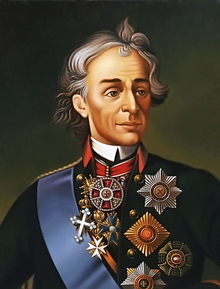
Russian Military HIstory: Aleksandr Suvorov
The course of events leading up to Napoleon’s invasion of Russia in June 1812 should not concern us here. The outcome of the war and its general pattern are also well known. From the doctrinal standpoint, however, several interesting features need to be pointed out.
In the first place, the Russian General Barclay de Tolly’s decision to allow Napoleon’s Grand Armee to enter Russia without a serious attempt at resistance caused an enormous political problem, both at court and with Russia’s chief ally, Britain. It is important to bear in mind, however, that it is the oldest maxim in war “never to do what your enemy wants you to do” and that Napoleon would quickly have blown the Russian Army into chaff had he been challenged close to the frontier. It should be remembered also that Kutuzov (1745-1813), Suvorov’s disciple, continued de Tolly’s retreat after he became supreme commander. The point is this: the Russian Army had to rely on a strategy of retreat and scorched earth despite all the political and economic liabilities of such a strategy. To have done otherwise would have invited complete disaster. In this respect, Joseph Stalin’s position was not much different from Tsar Alexander’s, as will be seen in Chapter I.
There is another interesting parallel between Alexander’s and Stalin’s wars: the peasant factor. In both cases, the peasantry remained loyal to the regime and gave their lives in vast numbers to repel the invaders. One might wonder why this was so, considering that conditions for them, both in serfdom and later on collective farms, were so harsh and degrading. Answering this question provides an insight into what has made the heart of Russia, both Communist and before, beat with a singular will to live.
Before his great adventure in 1812, there had been much talk in Russia about what the French emperor might do if he succeeded in unfurling his flag above the Kremlin. There seemed to be a widespread hope among the peasants (and fear among the nobility) that Napoleon would abolish feudalism and serfdom in Russia and encourage the emergence of a small-holder class of farmers, similar to what had emerged in France during the revolution. It is not precisely certain what the origins of this rumor were, but anyone familiar with Napoleon’s attitude toward the land question in Poland would have expressed extreme reservations about liberation of the serfs in Russia by the French. Polish peasants were “liberated” in name only in 1807, but no move was made really to free them. The Polish nobles rallied to Napoleon’s cause in 1812 because he pointedly refused to liberate the serfs in White Russia and in Lithuania.
Napoleon also used French troops to put down peasant revolts in White Russia at the request of Polish landowners. Once the war began and Napoleon failed to issue an edict freeing the serfs in Russia, the peasantry rallied to the Tsarist cause with a vengeance.
The single most important continuous thread of the Russian Military History has been that no invader of Russia, from the Turko-Tatars to Hitler, has ever offered the Russian masses anything better than the conditions they already had. Typically, as was the case with Napoleon and Hitler, an enemy victory would probably have resulted in a worsening of conditions for the masses as a whole and the peasants in particular. Russian rulers have used this fact most often to save themselves.
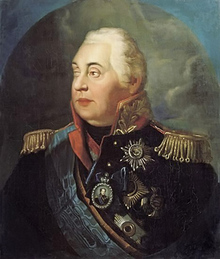
Russian Military History: Mikhail Kutuzov – a World-famous military commander and diplomat
Kutuzov’s strategy of retreat without giving battle was, until the fateful confrontation at Borodino, forced by necessity, as in fact most Russian strategic decisions have been. What was unique about Kutuzov was his refusal to destroy the Grand Armee in November 1812 en route back to Poland. The reason for Kutuzov’s “parallel pursuit” of the demoralized Grand Armee could be that the French were being destroyed through exposure and starvation anyway, and although it is true that an attempt was made to keep them from crossing the Berezina River, another explanation could be that Kutuzov simply did not consider that ridding Europe of Napoleon was truly in Russia’s best interest at that particular point. Russia had not yet reached the stage when massive intervention in European affairs was an all-consuming objective; this characteristic of Russian foreign policy would appear later.
After the Congress of Vienna and the final defeat of Napoleon in 1815, Russia, under Nicholas I and Alexander II, began a long and steady decline in military preparedness. Whereas in 1812 the average the Russian army unit was equipped with more cannon than its counterpart in the French army, during the period after 1815 virtually no improvements were made in Russian artillery. This lack of progress became painfully evident during the Crimean War (1854-1856).
The events in the Balkans that preceded the Crimean War are of peripheral importance here. The key points to observe are that Russia by 1854 was interested in obtaining world power status by commanding the Bosporus and the Dardanelles and that a joint operation by two major powers, Britain and France, albeit with very limited tactical objectives, was just sufficient to hold the Russian bear in check. The fourth major European power, Prussia, maintained a strained silence; nevertheless, Russia could not overlook the possibility of a threat either from the west or from the north against Saint Petersburg. The Russian Military Doctrine had accounted for the difficulties that might be encountered in a two-or even three-front war, but not against major opponents. The other European powers had coped with this problem many times before, notably Prussia during the Seven Years’ War and Britain in its war against Napolean and against America in 1812, but for Russia the problems seemed especially grievous considering the vast distances involved and the poverty of its transportation resources. These problems in fighting multi front wars remained essentially unsolved by Russia in the nineteenth century, and at the same time became ever more important because of the continuous expansion of colonization in Asia, in Turkestan and Siberia. The dangers inherent in such rapid expansion became all too real when Japanese torpedo boats sank the Russian fleet at Port Arthur in late 1904.In the war against the Japanese, despite the twin catastrophes on land at Mukden and at sea at Tsushima, the army held together and did not crack, even though the homeland seethed with unrest, culminating in the abortive Revolution of 1905. The reasons for the steadfastness of the army under these conditions are instructive, especially when its behavior is contrasted with the inward collapse that occurred in 1917.
First, the Japanese war objectives were clearly limited in scope, and all of the fighting took place on foreign soil, in China and Korea. The point is that the Japanese made no attempt to take what was perceived to be Russian territory proper, nor did they have a political philosophy that they cared to promulgate among the Russian people. Second, the war was a short one lasting only a few months. Had it turned into a protracted conflict, the unrest at home would have worked as a poison among the ranks of soldiers.
However, in 1917, by contrast:
- a political philosophy hostile to the regime was spread through the army by a well-organized group within Russia
- the First World War was a protracted conflict, and the heavy losses on the battlefield, coupled with the hope of positive good coming from a change in the regime, resulted in a devastating moral collapse in the military.
The Russian Military Doctrine on the eve of World War I in 1914 had become a virtual prisoner of Allied planning. Prance, in particular, had been given a full claim in Russia’s stake in strategic and tactical theory. Probably never in history has a major power so completely prostrated itself to the goals of its allies. The reasons for this utter abandonment of independent thought are complex and should not be discussed here, but the point needs to be made that by August 1914,The Russian Military Doctrine had become a mere extension of French revanehist dreams. Aside from vague musings about Pan-Slavist causes, which few Russians could ever understand, in the beginning Russia had no publicly voiced strategic objectives in the war. Beneath the surface there were objectives, objectives, that, in the past, had caused Britain’s adamant and undying opposition: the breakup of the Austro-Hungarian Empire and the seizure of the Straits from Turkey, Germany’s ally. The seizure of the Straits would have transformed Russia immediately into a world power and would have put it squarely into the arena of competition with Britain from Suez to India. In March 1915, Britain formally agreed that Russia could annex the Straits and Constantinople, but after the failure of the British Dardanelles campaign in that year, this seemed to be a moot point. As it was, the agreements with the Allies concerning the Straits were kept secret until December 1916, but by then the overall military situation had deteriorated to the point that the announcement failed to stir any public support whatsoever.
Russia’s supporting role in the war, as determined by French requirements, called for it to take up the offensive into East Prussia soon after the commencement of hostilities, a mission for which the army was tragically ill equipped. The inertia of Russia’s mobilization schedule alone (and early mobilization itself would have been tantamount to a declaration of war) should have predicated against such a foolhardy scheme as tramping directly into the lair of the strongest enemy. Had Russia waited until the proper moment for full mobilization of its steamroller, and had the army been used properly against Austria-Hungary, an opponent more nearly equal to Russia in fighting capacity in 1914, then good results might have been achieved. As it was, however, the outcome was virtually predestined. As the sun set over the bloody battlefield of Tannenberg, so it set over Russia’s hopes for a quick victory. Once the war ground on into an interminable struggle, new forces came into play that brought about the eventual disintegration of the armed forces. The lack of objectives or any sense of moral cause in the war, in addition to the windrows of casualties, themselves probably would not have caused the collapse of the army. The injection, however, of a political “virus”-Bolshevism -into Russia by the German enemy created conditions favorable for the development of a revolutionary fever.
The Bolsheviks-Lenin, Trotsky, Stalin, and the others-were astute enough to realize their chances for success in toppling the regime were directly related to Russia’s continued participation in the war. The war provided the catalyst for change, and when the provisional government decided, not only to stay in the conflict, but indeed even to increase the effort, the roof began to cave in on the Russian army.
Russia had given a good account of itself in the war, especially against the Austrians. A. A. Brusilov’s offensive into Galicia in the summer of 1916 was a significant success and showed what the army could do when it was given a good plan and was well led against forces more or less its equal. But the army’s record against German forces was dismal, even disastrous. This failure is tied to economic developments: Industrialization in Russia in 1914 was still in its infancy, and the country had certainly not kept pace with Germany in any area of manufacture, let alone armaments. In 1913 Germany produced 29.1 million tons of iron and steel and 191.5 million tons of coal; in the same year Russia produced 4.43 million tons of iron and steel and 39.85 million tons of coal. The Russian transportation system was very weak and the methods of supply heartbreakingly slow, this in a country that had undertaken the invasion of East Prussia as its first act in the war. In October 1914, the Russian army needed four weeks to move ten army corps a distance of about 325 kilometers from western Galicia to the middle Vistula. The entire month of May 1915 was needed to deploy an army in Bukhovina, and even after a successful offensive operation was concluded, the army had to pull back because of supply problems. By way of comparison, in March 1918, the French were able to concentrate twelve divisions to defend Amiens within only four days. The Germans needed only a week to pull eight divisions into the Gorlice-Tarnow area in May 1915-a force that was increased to thirty divisions in another two weeks to block a Rumanian intervention and ward off an expected Russian offensive. The Russians themselves calculated that it required two weeks to move one army corps of two divisions from the northern to the southern part of the front{9}. It is clear that the strategic role assigned to Russia by its allies was not in its best interests. But finally, it must be said that the external enemy was not what overcame the army- instead, the forces of adhesion in its ranks began to loosen due to internal propaganda.
The First World War differed from Napoleon’s invasion in 1812 in its effect on the Russian people and the army. As has been mentioned, the Russian people felt that they had nothing to gain from a Napoleonic victory in 1812. On the contrary, the peasants felt they had potentially a great deal to lose from the French alliance with the Polish nobility. During World War I, however, the army gradually came to perceive that the survival of the tsarist regime would be a greater evil than revolution at home and a humiliating peace with the enemy. This gradual change in mood came about because the country’s war aims, at least publicly, were dictated by the Allies and had little or nothing to do with Russia’s interests as a nation or those of the people. The whole way the war was conducted, at both the strategic and the tactical levels, demonstrated eventually even to the lowest private that the army was literally being used up for the Allies’ cause, not Russia’s. Finally, an ingredient was added in 1917 that had been missing during the earlier invasion of Russia; an internal political movement at home -/ promised something definitely better if the soldiers would turn their guns against the regime instead of the enemy.
The collapse of the Russian army in 1917 must be understood as a breakdown from within. This collapse was the first within the Russian army since the “Time of Troubles” early in the seventeenth century. Since there has not been a comparable event since 1917, the objective lesson becomes doubly significant. The fact remains as a recurrent theme throughout Russian history: the people and the army will fight tenaciously for a cause they consider in their interest-they will turn on their regime, however, if a better alternative is offered.
The partisan movement, which has existed in Russia at least since the time of Pugachev’s rebellion under Catherine the Great, is illustrative of this point. Soviet commentators laud the usefulness of the partisans who operated behind German lines in World War II, but they fail to mention that large bands of partisans, such as the one led by Taras Borovets, fought against the Red Army. Some of the Ukrainian nationalist groups, Stepan Bandera’s for example, were particularly troublesome to both the Germans and the Soviets and attempted to organize a resistance against both sides in the war. Other disaffected army men and peasants joined the so-called Russian Liberation Army (ROA) headed by General Vlasov, a former Soviet hero who lent his services to the Nazis. In addition, one only has to recall the fierce struggle of collectivization in 1929-1933, which led to the wholesale slaughter of livestock by the peasants, to realize how potentially devastating such disaffection can be.
The remaining chapters are devoted to describing implementation of Soviet strategy and tactics during the early period of the war on the eastern front. Also, close attention is paid to the reasons for the failure of the German Wehrmacht to conquer the Soviet Union. It is hoped that the reader will be able to extrapolate the dangers, the power, but also the potentially fatal flaws, that lie buried within the Soviet system.
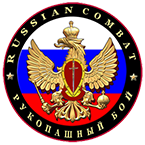




Leave a Reply